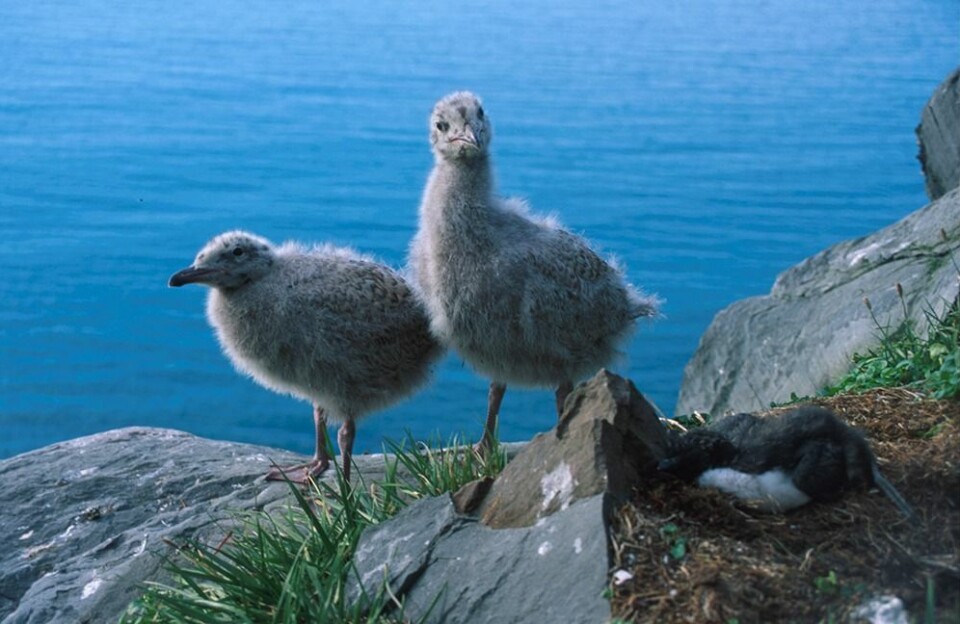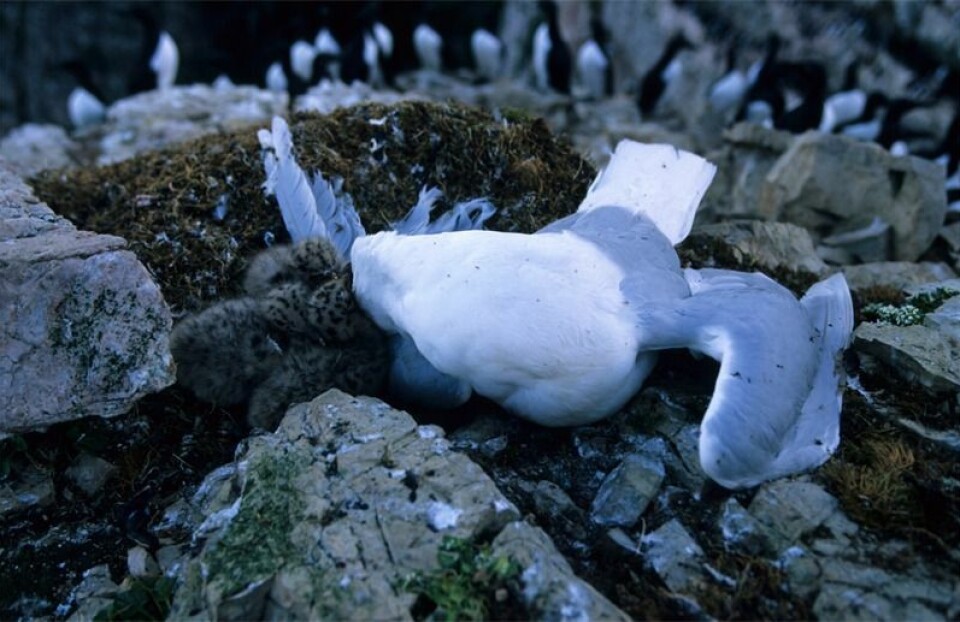Nearing the status of endangered
The glaucous gull population in Svalbard has declined so much researchers are concerned.

Denne artikkelen er mer enn 10 år gammel.

"We are seeing changes throughout the Arctic seabird community," said Hallvard Strøm, a Norwegian Polar Institute researcher. "Several species are going forward while others, such as the glaucous gull, are going back back sharply. The decline in glaucous gull population is disturbing because they are at the top of the food chain and an important indicator of the health status of several other species in the Arctic ecosystem."
Increasing surveillance
The glaucous gull population has declined during the past few decades on Bjørnoya. Researchers now plan to determine if a decline has occurred elsewhere in Svalbard. If so, a case can be made that the glacier gull should be listed as "endangered" on Norway's Red List, according to the Norwegian Polar Institute.
The species nests in the Arctic and Bjørnøya is known as one of the birds' most important breeding areas. Therefore, the findings are troubling, according to scientists now planning to increase their monitoring of the species.
Higher mortality rate
In addition to climate change and food shortages being key reasons for the population decrease, researchers state environmental contaminants pose an increasing threat.
Research has previously demonstrated higher death rates are caused by toxins, with birds with high levels of pollutants approaching a mortality rate of nearly 50 percent. New research also shows the glaucous gull populations in Canada and in Iceland have declined, while figures in Alaska, Greenland and Russia are uncertain.
The birds are among 22 Arctic seabird species the Arctic Council is proposing to give priority to for future monitoring.
"It is necessary to intensify the monitoring of glaucous gulls in the future to get a better understanding of the reasons for the population changes," Strøm declared at the polar institute's website. "We are making good progress in this work, but we still have some unanswered questions including, among other things, we want to combine the survey of breeding areas with study of winter migration for possible impacts."
Translated by Mark Sabbatini
